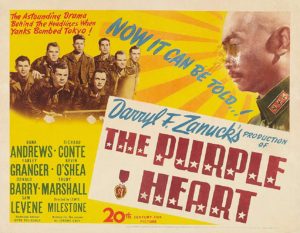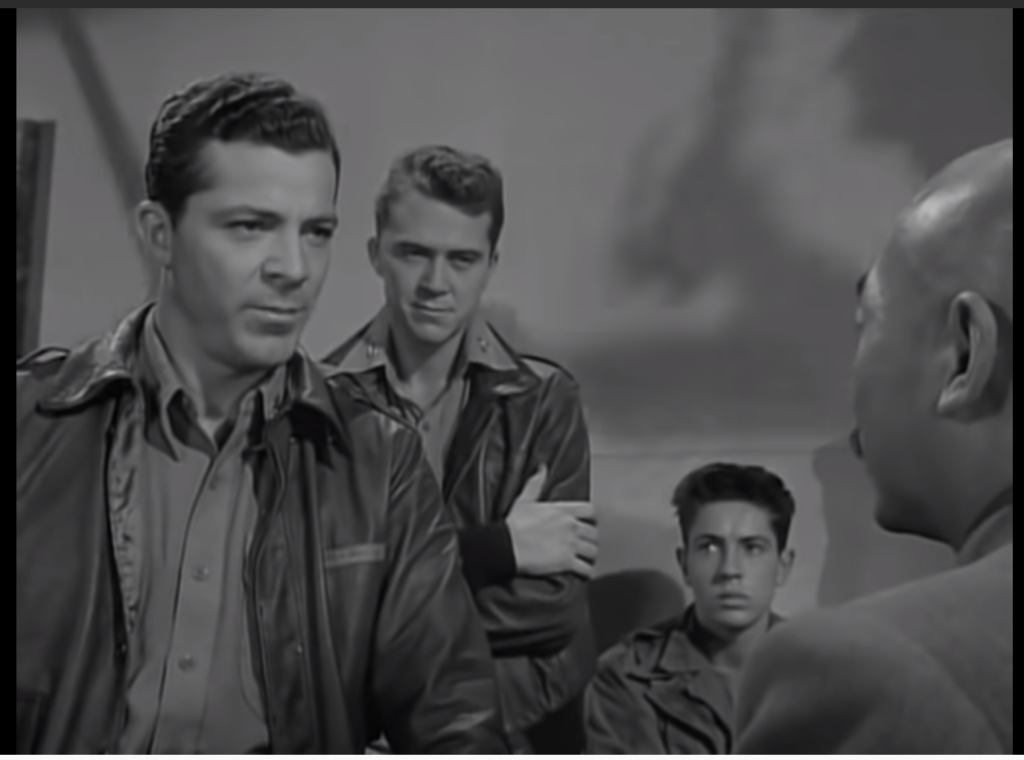“They claim we bombed and machine-gunned civilians, and are not entitled to be considered prisoners of war!”
|

Synopsis:
A group of bomber pilots led by Captain Ross (Dana Andrews) is captured by the Japanese during World War II and put on civilian trial for murder, while international journalists are invited to watch. Will Andrews and his loyal compatriots — Lt. Canelli (Richard Conte), Sgt. Clinton (Farley Granger), Lt. Greenbaum (Sam Levene), Lt. Vincent (Donald Berry), Lt. Bayforth (Charles Russell), Lt. Stoner (John Craven), and Lt. Skvoznik (Kevin O’Shea) — make it through torture and interrogation without breaking?
|
|
Genres, Themes, Actors, and Directors:
- Dana Andrews Films
- Farley Granger Films
- Lewis Milestone Films
- Prisoners of War
- Richard Conte Films
- World War II
Review:
This fictional depiction of a “show trial” following the United States’ 1942 Doolittle Raid of Tokyo is a rare film that must be viewed within its historical context in order to be understood and appropriately evaluated. Film fanatics not closely familiar with the aftermath of the Japanese bombing of Pearl Harbor in 1941 should do a bit of reading, and watch this movie with the understanding that it’s pure propaganda. As DVD Savant writes, the film is accurate in showing that “none of the American prisoners broke under pressure”, but “many details seem unlikely” — and given that “the film depicts the Japanese as verminous sub-humans”, it’s problematic at best and should be viewed with extreme caution. With that said, audiences at the time did watch this film (the New York Times referred to it as “honest and thoroughly consistent with American character”); it’s fully understandable Americans were uneasy about “the wartime actions of the Japanese military government”, which “ignored the Geneva Convention” and considered the Doolittle Raid “an act of murder and terror unrelated to their own sneak attack on Pearl Harbor”. In terms of aesthetics and style, the movie is atmospherically filmed, showing a stylized vision of Americans boldly standing up to their enemies, choosing death and torture over betrayal of their country.
Redeeming Qualities and Moments:
- Atmospheric cinematography


Must See?
Yes — but simply for its historical notoriety.
Categories
Links:
|



One thought on “Purple Heart, The (1944)”
First viewing. Agreed – a once-must for its historical notoriety, and agreed as well that a viewing should be in tandem with a degree of supplementary reading of expert viewpoints.
~ though, based on what I’ve learned over the years, I don’t doubt the elements of ruthless behavior involved / employed during wartime. But this is a 90-minute+ film – a lot of information is crammed into a short amount of time. So it should be seen in context of what is more widely known.
That said, much of the film is very effective. It does have moments that are a bit flawed. For example (at one point), since he’s unable to talk, Granger begins to write a message on the (dirty?) floor, using tea water. There’s no way he could write a message as long as the one he’s then quoted as saying. There are a few other such moments that defy belief – or aspects that seem to require more explanation. For example, it would help to know exactly *why* certain international journalists were allowed to sit in while others were excluded; an explanation of that may have helped viewers get a better understanding of the “show trial” in general.